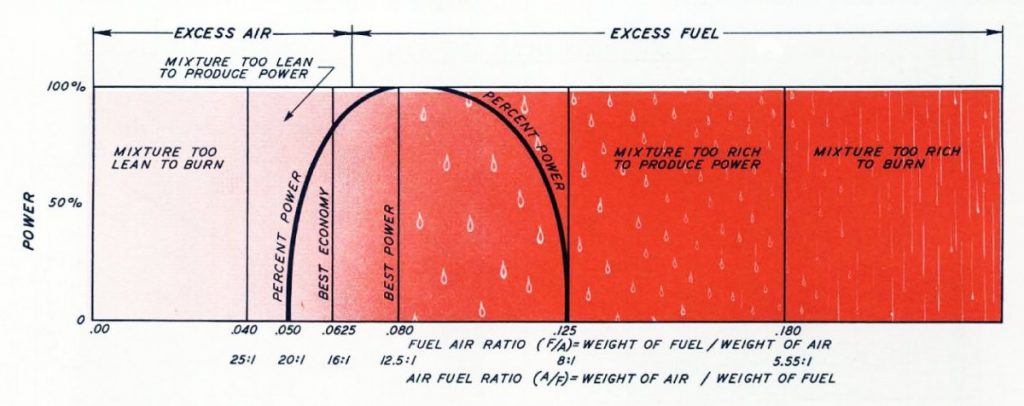Since I began my flight training amongst the Sierra Mountain Range around Lake Tahoe with airport field elevations over 4,000′, ‘leaning the mixture’ was something I was taught from the first lesson – even though I really didn’t understand what I was doing until later on in my training.

What surprised me when I began teaching students was that most pilots were not leaning the fuel mixture, either because they weren’t taught by their previous instructor or they just didn’t have a good understanding of what the mixture control does and it was ‘safer’, in their mind, to just leave it alone.
Using the mixture control is an integral part of engine management from start-up, taxiing, run-up, through cruise, changing altitudes, descent and after landing. Even those pilots working and training at sea-level should be using the mixture every flight.
The benefits of leaning the mixture are multiple:
- A cleaner burn of the fuel/air mixture prevents fouled spark plugs.
- Reduced fuel consumption – Saves money/greater range.
- Efficient fuel/air burn provides more engine power.
- Faster warm-ups for cold climates or first flight of the day.
For a quick explanation of engine leaning this short video from Aviator Zone Academy is a decent start:
For a slightly longer and more detailed explanation of what’s going on in the process when you lean a typical, normally-aspirated training airplane (e.g. C172 or P28A), this is a very good video from CFI Cyndy Hollman:
If you’re interested in even more details and an in-depth explanation of the engine leaning process, this 90-minute presentation from industry expert Mike Busch (a.k.a. The Savvy Aviator) should answer many questions:
One thing to note is that most small General Aviation airplanes typically only have an EGT (exhaust gas temperature) gauge and not a CHT (cylinder head temperature) gauge to assist in leaning. Mike Busch points out that this is not really the best tool for leaning as it primarily indicates ‘best power’ and the cylinder head temperature is a better tool, but we can only use the tools available to us in the airplane we are flying.
Important Note: About mid-way through Mike’s video he extols the virtues of running ‘Lean of Peak’, however his example is from what he flies in his Cessna Turbocharged T310R light-twin airplane, a Continental IO-550 engine with performance fuel injectors running at ~80% power – This is not typical. And in order to do this effectively it requires very precise engine monitoring and the POH or an STC should allow for this while most training airplanes do not. The Cessna Skyhawk 172R/S models using the Lycoming IO-360 engine, for example, specify the leaning to be set for 50°F ‘Rich of Peak’ using the installed EGT gauge. So, unless your airplane has advanced engine monitoring, performance mods and differing specifications, defer to the airplane POH/AFM.
